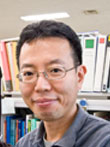- HOME > Laboratory > Groups > Advanced Applied Physical Science Lab. > Photonic Nano-Structure Research Group
The Nanophotonics Center (NPC) was established in April 2012, and is now composed of several groups involved in nanophotonics research and based in NTT’s Basic Research Laboratories and Device Integration Laboratories. Our aim is to develop a full-fledged large-scale photonic integration technology by which we will be able to densely integrate a large number of nano-scale photonic devices with various functions in a single chip. Furthermore, we are targeting a huge reduction in energy consumption for photonic information processing by taking advantage of nanophotonics technology.
We are conducting a unified research of fabrication, theoretical analysis, and evaluation for photonic crystals, with aiming to overcome various limitations in the today’s photonics technologies and to realize breakthroughs in photonic information processing.
We are developing an artificial periodic structure called a photonic crystal employing the state-of-the-art semiconductor nano-fabrication technologies for silicon and other semiconductors. Recently, we have realized ultrasmall optical resonators with ultrastrong light confinement by photonic crystals. In comparison with electronics technology, photonics technology is known to be good at handling ultrafast and broadband information processing, but it has a drawback in confining signal in a small space. The optical resonator we developed can store light within a wavelength-scale space for over a nanosecond. Such a resonator enables various ways of controlling light which have been impossible by conventional methods. As a example, we have recently demonstrated generation of slowlight in which the traveling speed of light is slowed down by a factor of 50, 000 using our ultrasmall resonators. This slowlight will be applied for signal buffering or enhancement of interactions in a photonic chip. Moreover, we have succeeded in developing ultrasmall photonic bit memories with extremely small power consumption, in which we have fully exploited theoretically-expected enhancement of light-matter interaction in our ultrasmall resonators. These technologies we are developing are suited for large-scale integration in a semiconductor chip, and we are currently continuing our research towards future densely-integrated photonic processing chips.

Dr. Akihiko Shinya
Dr. Eiichi Kuramochi
Dr. Hideaki Taniyama
Dr. Masato Takiguchi

Dr. Masaaki Ono
Dr. Shota Kita
Dr. Kenta Takata
Dr. Kohei Ikeda
Dr. Masaya Arahata

Dr. Sotatsu Yanagimoto









